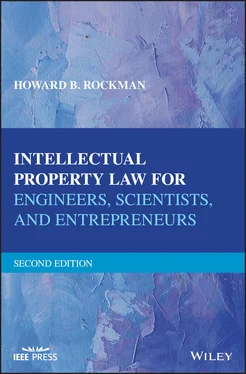After an invention is made, consider the importance of protecting the invention against competition by others when you create your market introduction plans for the invention. Is there a large competitor that can copy your product and put you out of business if your product is not covered by a patent? Consideration must also be given to the potential for foreign markets for the product or process, and whether foreign patent protection should be sought for your invention. Also, consider whether a competitor would have the capability of manufacturing a product in a foreign country to compete with you on a global scale, and whether or not you should obtain patent protection in that foreign country to deny the competitor the ability to manufacture in that country, thereby choking off potential infringement at the source.
There are additional factors that impact the decision whether or not to spend resources to obtain a patent, and these additional factors pertain to the individual characteristics of the given company and the industry in which the company operates. When decisions of a business nature have to be made, it is important to seek the advice of a competent patent professional, so that all of the options regarding intellectual property protection for your intellectual assets may be provided to those responsible for making business decisions. Obtaining worldwide patent protection on an important invention is an expensive proposition, and careful consideration should be given to making such decisions.
Careful study should likewise be given to the required investment for creating a new product, and bringing that product to market. Consideration should be given to the possibility of making necessary changes in existing production facilities to produce and launch a new product. Consideration of the extensive advertising budget required to convince the public of the reasons they should buy a new product, and to change their buying habits to accept the new product, is important. The size of the market for the new product and profitability studies are also important factors.
While the commercial importance of an invention is probably the most important consideration as to whether to obtain a patent, the credibility granted to the inventor(s) associated with an invention is a primary factor in assisting the inventor to convince his/her employer to commercialize the invention. A successful inventor requires credibility in the same way that a successful artist or author does. If the inventor has no prior successes to advertise, the inventor must establish credibility by proving that the product embodying the invention is worthy of the investment of resources. A favorable sales history for a patented product also builds credibility. All of these factors make it easier for the inventor to span the gap between a conceived idea and actual commercialization of the embodiment of that idea.
The inventor must also determine whether the public is ready for the invention. For example, a variety of economic, production, and management factors may come into play to shift the period of patent protection away from the period when the invention is commercially important. Several of my clients have attempted to interest companies in licensing their inventions, and a frequent response was that the company had no further funds available that year to introduce new products. This can be disappointing to the inventor, and not because the invention did not have a high profitability forecast. An example is heavy industries, where actual production methods may lag behind current available technology by a period that is much longer than the life of a patent. Thus, the value of a patent can be greatly influenced by the patterns for change that exist for specific products in given industries. Anecdotal information reveals that many inventors often underestimate the cost and difficulty of commercializing their inventions, and overestimate the market size and expectations of purchaser acceptance. The inventor must be prepared to face and overcome numerous difficulties before an invention returns a monetary award, and the inventor must be willing to work hard and not be dissuaded in the face of negative responses to move the invention to market before he/she realizes any reward. In other words, keep pushing your idea, and—above all—be patient!
3.4 BROADLY, WHAT DATA GOES INTO A PATENT
3.4.1 Describing the Background and Essential Elements of the Invention
An article or process patent begins with a title generally describing the invention, followed by a short paragraph comprising a broad statement of the field of technology to which the invention relates. This is immediately followed by a more specific statement as to the subject matter of the invention.
The specification next sets forth a statement of the background of the invention, including an explanation of the problems in the existing art to which the invention is directed towards solving, and the known relevant prior art that can be shown to have failed to specifically solve these problems. The prior art is that which the inventor is aware of, or has obtained from a pre‐examination novelty search (see Chapter 8for searches). The patent at this point may also state briefly what the various prior art reference patents disclose, followed by one or two statements indicating what the reference patents lack, compared to the details of the subject invention.
The background of the invention section may also include a statement of the objects of the invention. These are usually broad statements setting forth the results achieved by the invention that are different from and superior to the results obtained by using the devices or methods disclosed in the prior art, without setting forth the details concerning the structure and functioning of the invention's elements to achieve those results. This latter information appears later in the patent document.
Next, the patent includes a summary of the covered invention, which is a short statement of the elements of the invention, how they relate to each other, and a statement of the functions of those elements. Also included is a statement setting forth how the invention will meet the objects or results set forth in the previous paragraph.
The background of the invention is followed by a brief description of the drawings or illustrations, where present, describing the view depicted of the device in each figure.
After the brief description of the drawings is the all‐important detailed description of the illustrated embodiment of the invention, which sets forth a complete explanation of the invention’s structure, the relationships between all structural elements, and the operation/function of the structural elements of the invention shown in the drawings. This description includes only the essential features of the invention, eliminating descriptions of features that are non‐essential. In this portion of the patent specification, each essential element of the inventive structure is named, numbered, and the numbers coordinated with the illustrations in the drawings. The accuracy of this particular section of the application is important, since it must enable a person skilled in the art to replicate the invention once the patent expires without undue experimentation. The description must be a full, clear, concise, and exact description of the invention. Common terminology in the industry or trade is used to describe the invention, with the patent attorney having some latitude in using broader language than that normally used to describe an element or function of the invention. Where a process or method is described and no illustration is necessary to understand the invention, a detailed description of the process used, including examples, is set forth.
3.4.2 Claiming the Invention
Читать дальше












